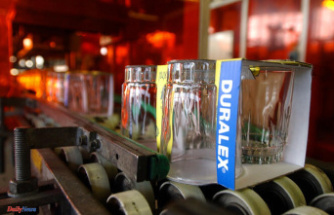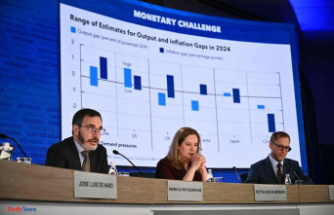Price increases in Spain are falling more sharply than expected - which could be a good omen for the rest of the euro area. The ECB has also been more confident of late. However, according to experts, a return to the price increases of the past few years will probably take a while.
Inflation in Spain eased more than expected in December. In the fourth largest economy in the euro zone, consumer prices rose by 5.6 percent on the previous year according to European measurement (HICP), as reported by the National Statistics Office INE on the basis of preliminary data. Experts, on the other hand, had expected a value of 6.0 percent - after 6.7 percent in November.
The stronger-than-expected easing of price pressure is seen as a good omen for the forthcoming price data from the entire euro area. Figures from the Eurostat statistics office will be published next Friday: Experts expect consumer prices in the countries of the monetary union to have risen by 9.7 percent in December - after 10.1 percent in November.
Recently, however, the German economy has not given consumers the prospect of a rapid end to the sharp rise in prices. "Inflation started before the energy crisis and will continue for the time being," said Peter Adrian, President of the Association of German Chambers of Industry and Commerce (DIHK). "We have to assume that inflation will remain above the reasonable ECB target of two percent for some time."
The Central Association of German Crafts (ZDH) is also not yet giving the all-clear on inflation for the next few months. "A noticeable slowdown in price increases is probably not expected until summer 2023," said ZDH General Secretary Holger Schwannecke. But even then the level will remain high and the rates of increase will be "significantly higher than in the years before 2022".
According to estimates by the Federation of German Industries (BDI), inflation is no longer being driven primarily by energy prices, but by a number of factors. "A return to a level of two percent is likely to take longer and can only be achieved by the middle of the decade, when monetary policy takes effect," said BDI President Siegfried Russwurm.
The Federal Association of Wholesale, Foreign Trade and Services (BGA) hopes that the peak of the sharp rise in prices may already have been reached. "We are now also seeing the first signs that the price pressure is easing," said BGA President Dirk Jandura. "In the case of energy and raw materials, we are seeing a trend towards declining prices again." He is confident that this development will continue.
The European Central Bank (ECB), which is currently miles away from its inflation target of 2.0 percent, has recently taken its foot off the accelerator somewhat in its monetary tightening course. After two unusually large hikes of 0.75 percentage points each, it raised key interest rates by 0.50 percentage points.
ECB President Christine Lagarde promised further increases in interest rates in the fight against high inflation. She signaled that the rate of increases by half a percentage point would probably be maintained at the next meetings. The next interest rate decision is due in early February.












